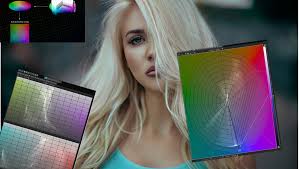

- #3D LUT CREATOR NOT SAVING LICENSE KEY#
- #3D LUT CREATOR NOT SAVING PRO#
- #3D LUT CREATOR NOT SAVING SOFTWARE#
- #3D LUT CREATOR NOT SAVING TRIAL#
- #3D LUT CREATOR NOT SAVING ZIP#
OK to Delete: Export LUT needs to create and import temporary images to build LUTs. The Export LUT collection set contains two collections: Preview LUT will then make a virtual copy for each selected image and preset, which you may then examine and compare. Then invoke File > Plug-in Extras > Preview LUT and choose one or more develop presets. It’s best to use TIFFs or JPEGs rather than raws, since presets can look differently applied to raws. To use Preview LUT, first import and select one or more images that are representative of the videos or photos to which you’ll be applying the LUT. It simply applies the chosen presets to the selected images, minus the develop settings that LUTs can’t represent. But you can approximate the LUT’s look within Lightroom using the Preview LUT command. The best way to judge a LUT is to apply it to your videos or images, of course.
#3D LUT CREATOR NOT SAVING PRO#
The program “ffmpeg” and the LUT Utility for Final Cut Pro X are two culprits that need this option (they don’t fully implement the Adobe/IRIDAS standard). cube files if your video editor or LUT utility complains it can’t read the LUT. The LUTs are created in the IRIDAS/Adobe. You can enter your own filename template using the Token dropdown menu. By default the LUTs will have filenames of the form presetorphoto-colorprofile-gridpoints.cube.
#3D LUT CREATOR NOT SAVING SOFTWARE#
Some video software will clumsily grind to a halt if you try to use very large sizes (e.g. But keep in mind that doubling the size of the quality increases the total size of the LUT by eight, making it much slower to read into your video editor. There can be noticeable differences between 32, 64, and 100, with differences above 128 hard to discern. If you’re not sure, refer to the application in which you’ll be applying the LUTs.

Choose the quality of the LUTs, the number of grid points per color channel.It’s important to use the correct color profile, otherwise the LUT won’t accurately recreate the look of the presets or photo.
For video, the default Rec 709 Gamma 2.4 is usually the best choice (see Video Color Management). Choose the color profile representing the color space of the images or videos to which the LUTs will be applied.If you see the warning, “The selected photo doesn’t have an embedded color profile”, use the Assign Color Profile command to assign the correct color profile to the photo. Non-raw photos better approximate the appearance of a LUT’s look”, use a TIFF or JPEG instead. If you see the warning, “This is a raw photo. If you see the warning “Selected presets or photo have develop settings that can’t be represented by LUTs”, click the Show Settings button see Limitations of LUTs. One LUT will be generated for each photo or preset selected. Choose the currently selected photo(s) or one or more presets as the source of the develop settings.Invoke File > Plug-in Extras > Export LUT and then: Quick step-by-step recipes with no chatter or hand waving:įor more explanations, watch one of the dozens of video tutorials: English, español (Spanish), русский (Russian), bahasa Indonesia (Indonesian), français (French), 中文 (Chinese), Deutsch (German), ไทย (Thai), italiano (Italian).
#3D LUT CREATOR NOT SAVING LICENSE KEY#

#3D LUT CREATOR NOT SAVING TRIAL#
Make sure you’re satisfied with the free trial before buying. To export larger cubes, you’ll need to buy a license. The free trial is limited to small LUTs of size 4, which won’t reproduce colors accurately.
#3D LUT CREATOR NOT SAVING ZIP#
zip and move it to a location of your choice.


 0 kommentar(er)
0 kommentar(er)
